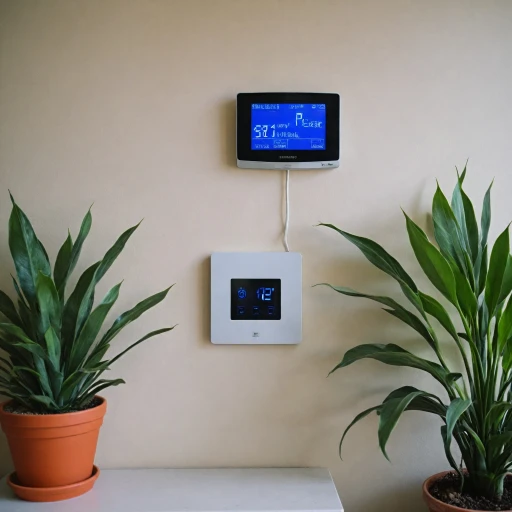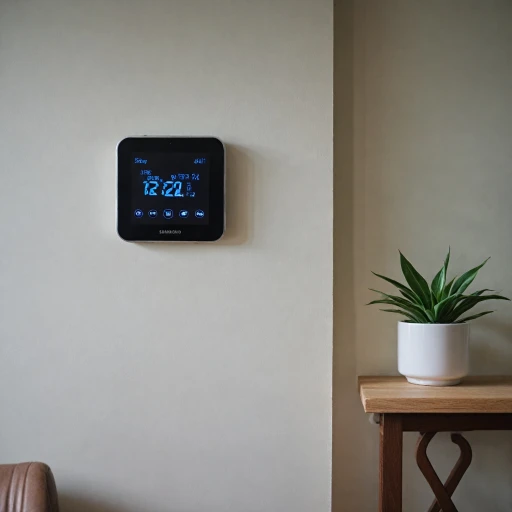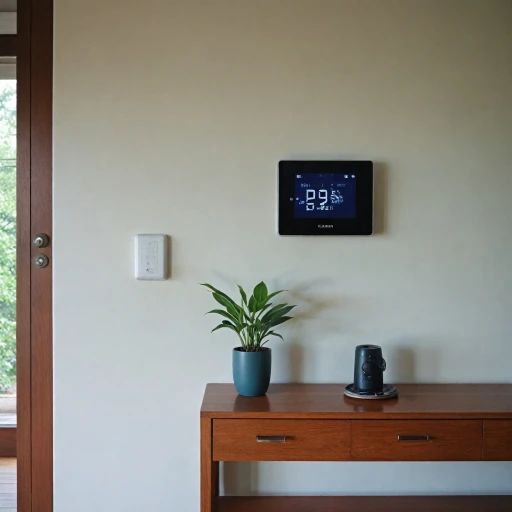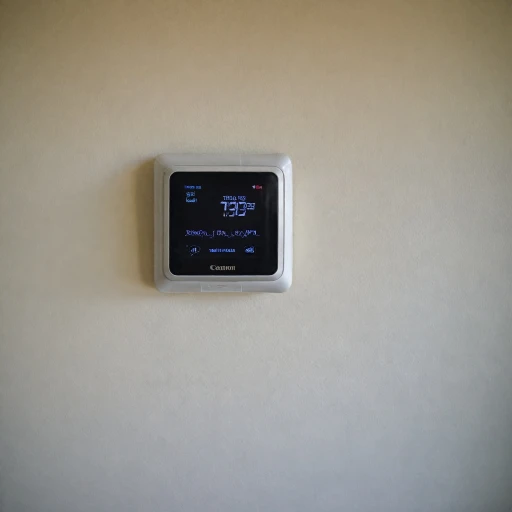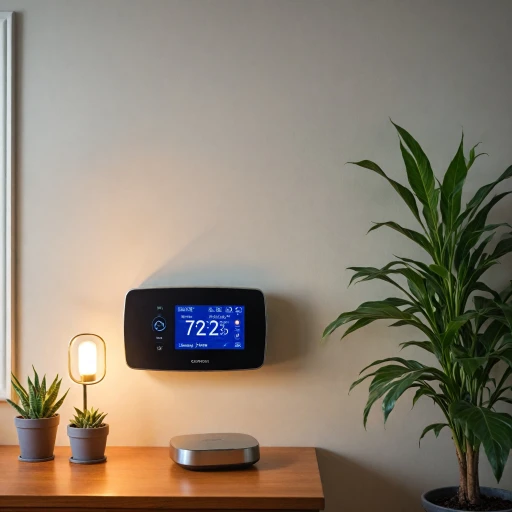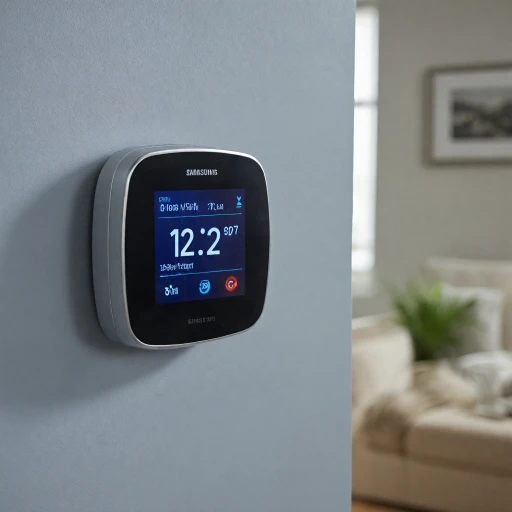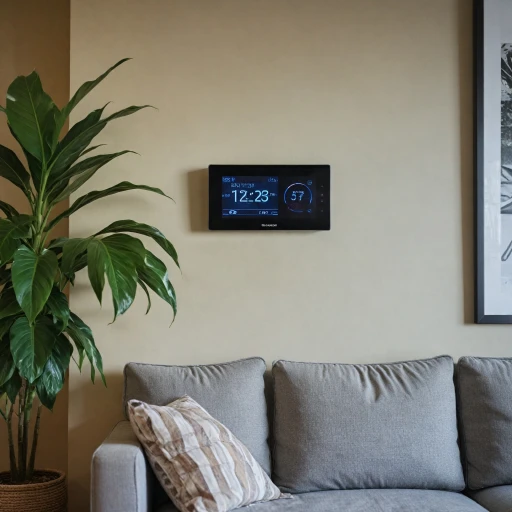
Understanding Smart Thermostats and the C Wire
Demystifying the C Wire in Smart Thermostats
Smart thermostats have become increasingly popular, offering enhanced control over your home’s HVAC system. However, the installation process often includes terms that might seem intimidating, like the 'C wire' or common wire. Understanding its role is crucial when considering your smart thermostat options. A C wire is essentially a power connector that provides continuous power to a thermostat. Many traditional thermostats haven't required one, drawing energy from batteries instead. But now, smart thermostats, including popular models like the Google Nest and other learning thermostats, rely on a stable power source to support advanced features, such as Wi-Fi connectivity and energy usage tracking. Although the Nest Learning series and similar smart thermostats are designed to work seamlessly with a C wire, certain models cater to older HVAC systems that lack a dedicated C wire. These innovative thermostats can function with either a power adapter or a wire adapter as an alternative solution. For those exploring these options, brands offer thermostat models like the Sensi Lite and Nest Thermostat that manage energy needs without requiring additional wiring. For someone venturing into smart thermostats, the ability to control energy usage and contribute towards energy efficiency without the need for extensive rewiring can be compelling. The introduction of touch smart technology and lite smart versions, among others, illustrate the best options for connecting modern devices without the hassle of integrating a new system setup. For more insights into understanding intelligent thermostat technology, consider exploring a detailed discussion on smart thermostat evolution. This will help you make informed choices when selecting the right thermostat model for your needs, whether it requires a wire or not.Benefits of Smart Thermostats Without a C Wire
Advantages of Choosing a Smart Thermostat Without a C Wire
Smart thermostats have revolutionized the way we manage our home’s climate, offering advanced features and convenience. However, not all homes are equipped with a common wire (C wire), which is often necessary for powering these devices. Fortunately, there are smart thermostats designed to work without a C wire, providing several benefits:
- Ease of Installation: One of the most significant advantages is the simplicity of installation. Without the need for a C wire, homeowners can avoid complex wiring tasks, making it easier to set up the system themselves. This can be particularly beneficial for those in older homes where adding a C wire might be challenging.
- Flexibility in Options: The market offers a variety of thermostats for your home that do not require a C wire. From the popular Nest Thermostat to the Sensi Touch Smart Thermostat, there are numerous options that cater to different preferences and budgets.
- Energy Efficiency: These thermostats are designed to optimize energy usage, helping reduce utility bills. They often come with features like learning capabilities, which adapt to your schedule and preferences, ensuring efficient energy consumption.
- Cost Savings: By eliminating the need for professional installation or additional wiring, homeowners can save on upfront costs. Moreover, the energy efficiency of these devices contributes to long-term savings.
- Compatibility with Existing Systems: Many smart thermostats without a C wire are compatible with a wide range of HVAC systems, making them a versatile choice for various home setups.
In summary, opting for a smart thermostat that does not require a C wire can simplify the installation process, offer flexibility in product choice, and enhance energy efficiency, all while being cost-effective. As you explore your options, consider the features that best suit your needs and the specific requirements of your HVAC system.
Installation Tips for Smart Thermostats Without a C Wire
Installing Smart Thermostats Without a C Wire
When it comes to installing a smart thermostat that operates without a common wire (C wire), there are several solutions that offer ease and convenience. Although having a C wire is generally beneficial for powering the thermostat, many modern smart thermostats are designed to work efficiently without it.- Power Adapter Options: One of the most straightforward approaches is to use a power adapter. Products like the Nest Power Connector or wire adapters can supply the necessary power to the thermostat, negating the need for a C wire directly within your HVAC system.
- Battery-Powered Thermostats: Several smart thermostats, such as the Nest Thermostat and other lite smart options, are designed to operate on battery power. Though this solution avoids wiring complications, it's important to consider the battery life and power management features when selecting a battery-powered model.
- External Transformer: If your setup allows, installing an external transformer can also provide a steady power source. This approach requires some basic electrical knowledge and may be suitable for those comfortable working with wiring systems.
Top Smart Thermostat Models That Don't Require a C Wire
Leading Smart Thermostat Choices Not Needing a C Wire
When it comes to smart thermostats that function seamlessly without a C wire, there are several outstanding options available in the market. Each of these models comes with unique features and advanced technology, enhancing your control over your HVAC system. Here's a look at some of the best smart thermostats that don’t require a common wire:- Nest Thermostat (2020 Model): As part of Google's smart home lineup, the Nest Thermostat efficiently manages your home's energy usage even without a C wire. This model is designed with a built-in battery that draws power from your HVAC system. While it won't offer all the features of the Nest Learning Thermostat, it remains a solid choice for those prioritizing simplicity and ease of use.
- ecobee SmartThermostat with Voice Control: Known for its adaptability and intelligent home integration, the ecobee model includes a power extender kit to substitute the need for a C wire. This option allows users to experience premium features such as voice control and multi-room sensing without additional wiring.
- Sensi Touch Wi-Fi Smart Thermostat: A top contender for its user-friendly interface, the Sensi Touch doesn't require a common wire. The model provides an uncomplicated installation process using a smart wire adapter, making it an ideal option for older systems or unique setups.
- Honeywell Home T5 Plus Smart Thermostat: With its flexible connectivity options, the Honeywell Home T5 Plus can operate without a C wire by utilizing a power connector or an external adapter. It offers a learning thermostat feature that adapts to your daily routine, ultimately streamlining your energy management.

